If you’re seeking investors, this financial document can give them insight and help them to decide if your company is worth the investment. Below is a current liabilities example using the consolidated balance sheet of Macy’s Inc. (M) from the company’s 10-Q report reported on Aug. 3, 2019. A company that can’t afford to pay may not be operating at the optimum level. Liabilities can help companies organize successful business operations and accelerate value creation. However, poor management of liabilities may result in significant negative consequences, such as a decline in financial performance or, in a worst-case scenario, bankruptcy.
Current liabilities are typically settled using current assets, which are assets that are used up within one year. Current assets include cash or accounts receivable, which is money owed by customers for sales. The ratio of current assets to current liabilities is important in determining a company’s https://1investing.in/whai-is-law-firm-accounting-best-practice/ ongoing ability to pay its debts as they are due. A liability is an obligation of a company that results in the company’s future sacrifices of economic benefits to other entities or businesses. A liability, like debt, can be an alternative to equity as a source of a company’s financing.
Debit What Comes In, Credit What Goes Out (Real Accounts)
Referring again to the AT&T example, there are more items than your garden variety company that may list one or two items. Long-term debt, also known as bonds payable, is usually the largest liability and at the top of the list. Recorded on the right side of the balance sheet, liabilities include loans, accounts payable, mortgages, deferred revenues, bonds, warranties, and accrued expenses.
- Making sure that you’re paying off your debts regularly will help reduce your overall business liabilities.
- If a business wishes to purchase computer equipment worth £300, the purchase can be made in many possible ways.
- Both assets and liabilities are broken down into current and noncurrent categories.
- Long-term liabilities include areas such as bonds payable, notes payable and capital leases.
- It is a designation that is considered challenging to obtain, with exact requirements varying from state to state.
Both assets and liabilities are broken down into current and noncurrent categories. A contingent liability is an obligation that might have to be paid in the future, but there are still unresolved matters that make it only a possibility and not a certainty. Lawsuits and the threat of lawsuits are the most common contingent liabilities, but unused gift cards, product warranties, and recalls also fit into this category.
What are some current liabilities listed on a balance sheet?
An asset is anything a company owns of financial value, such as revenue (which is recorded under accounts receivable). Real accounts are permanent accounts, they are recorded in the balance sheet and are not closed at the end of an accounting year. Liability gives important information helpful in analyzing the liquidity and solvency of the organization.
Current liabilities are due within a year and are often paid for using current assets. Non-current liabilities are due in more than one year and most often include debt repayments and deferred payments. Long-term liabilities, also known as non-current liabilities, are financial obligations that will be paid back over more than a year, such as mortgages and business loans. Some items can be classified in both categories, such as a loan that’s to be paid back over 2 years. The money owed for the first year is listed under current liabilities, and the rest of the balance owing becomes a long-term liability. Liabilities are one of 3 accounting categories recorded on a balance sheet, which is a financial statement giving a snapshot of a company’s financial health at the end of a reporting period.
Assets, liabilities, and equity
If your books are up to date, your assets should also equal the sum of your liabilities and equity. Liabilities are any debts your company has, whether it’s bank loans, mortgages, unpaid bills, IOUs, or any other sum of money that you owe someone else. No one likes debt, but it’s an unavoidable part of running a small business.
If it goes up, that might mean your business is relying more and more on debts to grow. By far the most important equation in credit accounting is the debt ratio. It compares your total liabilities to your total assets to tell you how leveraged—or, how burdened by debt—your Webinar: Nonprofit Month-End Closing Accounting Procedures business is. As long as you haven’t made any mistakes in your bookkeeping, your liabilities should all be waiting for you on your balance sheet. If you’re doing it manually, you’ll just add up every liability in your general ledger and total it on your balance sheet.
Assets and liabilities for better decision-making
Assets and liabilities are both listed on a balance sheet and essentially balance each other out when it comes to a company’s finances. Assets are what the company owns, but the liabilities are what the company still owes. It’s important to understand https://personal-accounting.org/accounting-for-small-start-up-business/ how a balance sheet works to know how the money is flowing in and out of your business. Using a balance sheet can help you make decisions about your business and give you an understanding of where your business stands financially.
